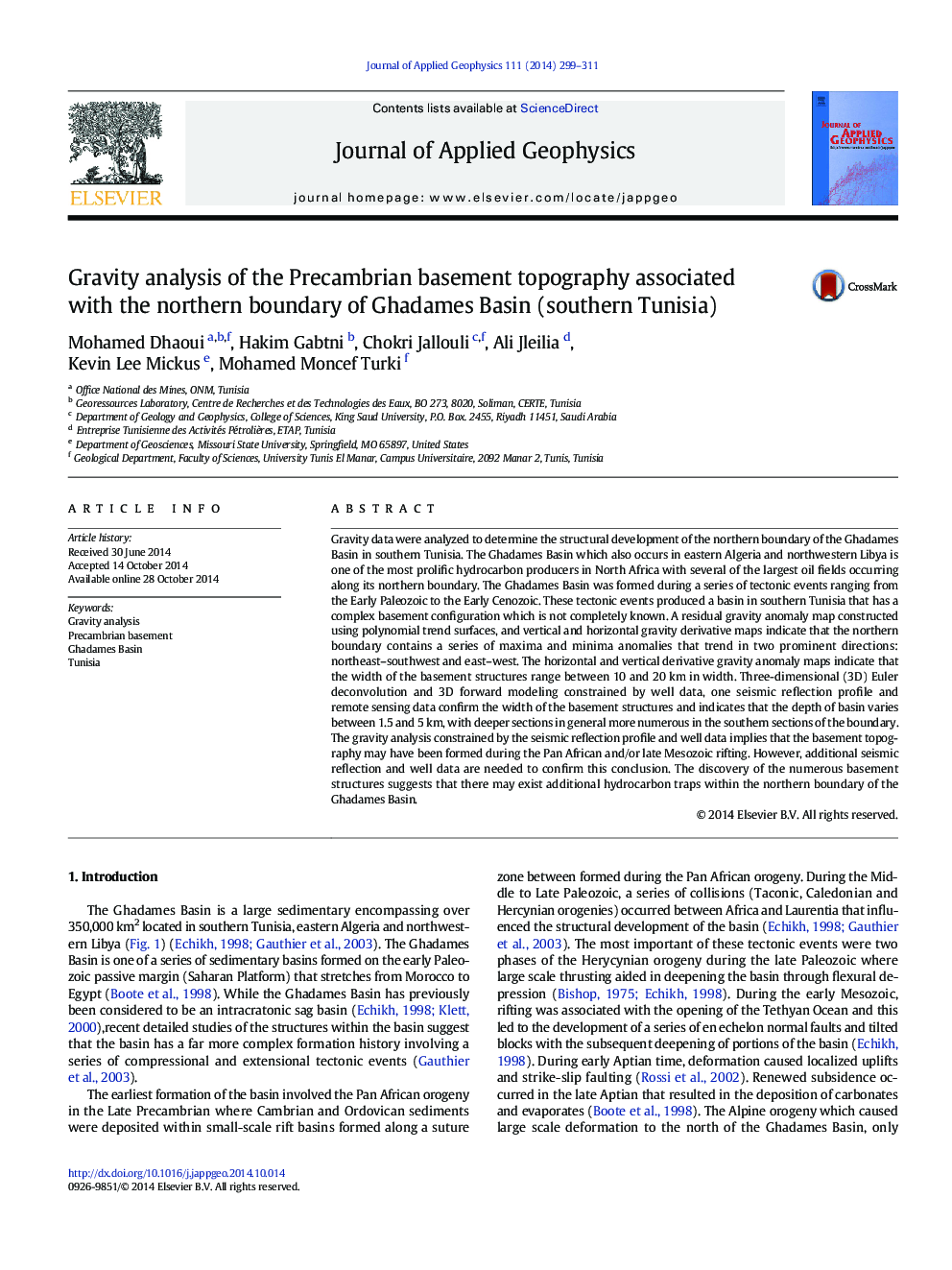| کد مقاله | کد نشریه | سال انتشار | مقاله انگلیسی | نسخه تمام متن |
|---|---|---|---|---|
| 4740112 | 1641140 | 2014 | 13 صفحه PDF | دانلود رایگان |
• The Ghadames Basin is more structurally complex than previously known.
• Basement structures trend northeast and east.
• Basement structures may be structural petroleum traps.
Gravity data were analyzed to determine the structural development of the northern boundary of the Ghadames Basin in southern Tunisia. The Ghadames Basin which also occurs in eastern Algeria and northwestern Libya is one of the most prolific hydrocarbon producers in North Africa with several of the largest oil fields occurring along its northern boundary. The Ghadames Basin was formed during a series of tectonic events ranging from the Early Paleozoic to the Early Cenozoic. These tectonic events produced a basin in southern Tunisia that has a complex basement configuration which is not completely known. A residual gravity anomaly map constructed using polynomial trend surfaces, and vertical and horizontal gravity derivative maps indicate that the northern boundary contains a series of maxima and minima anomalies that trend in two prominent directions: northeast–southwest and east–west. The horizontal and vertical derivative gravity anomaly maps indicate that the width of the basement structures range between 10 and 20 km in width. Three-dimensional (3D) Euler deconvolution and 3D forward modeling constrained by well data, one seismic reflection profile and remote sensing data confirm the width of the basement structures and indicates that the depth of basin varies between 1.5 and 5 km, with deeper sections in general more numerous in the southern sections of the boundary. The gravity analysis constrained by the seismic reflection profile and well data implies that the basement topography may have been formed during the Pan African and/or late Mesozoic rifting. However, additional seismic reflection and well data are needed to confirm this conclusion. The discovery of the numerous basement structures suggests that there may exist additional hydrocarbon traps within the northern boundary of the Ghadames Basin.
Journal: Journal of Applied Geophysics - Volume 111, December 2014, Pages 299–311
